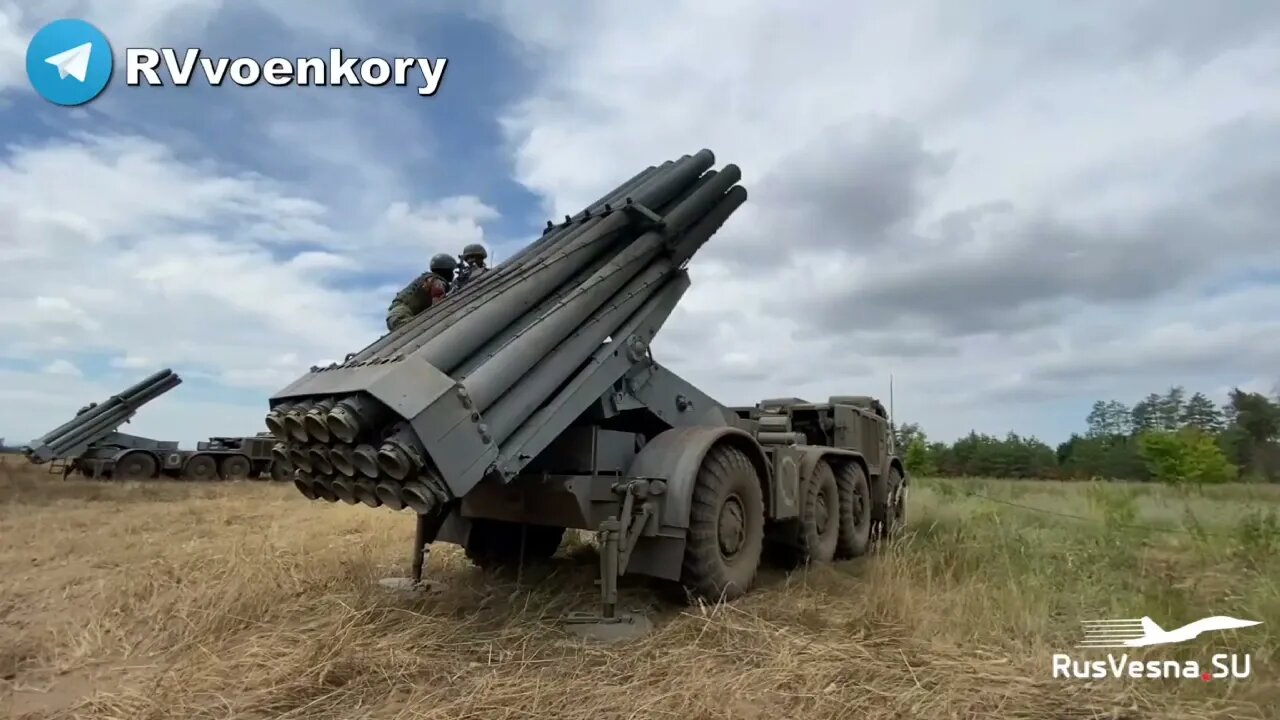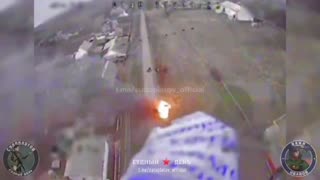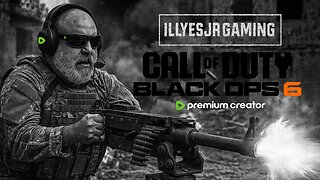Premium Only Content

BM-27 "Hurricane" MLRS Of The "O" Grouping Hammering Ukrainian Manpower & Equipment On The Front
🇷🇺🇺🇦 Uragan BM-27 "Hurricane" 220mm MLRS of the "🅾️" Grouping sweep away the positions of the Armed Forces of Ukraine!
Description
The 9P140 Uragan also named BM-27 is a 220mm MLRS (Multiple Launch Rocket System) designed and manufactured by the Russian defense industry.
The system was designed in the early 1970s, with development being completed in 1975.
The BM-27 was first seen in 1977.
The BM-27 is designed to engage any type of group targets, soft-skinned and armored vehicles, and military and industrial defense facilities.
The system can be used in conditions of enemy's application of the nuclear, chemical, or bacteriological weapon at any time, during night and day in various climatic conditions at air temperatures from -40° to +50°.
The BM-27 can be easily transported by railway or military transport aircraft.
The BM-27 can be ready to fire in less than 3 min and leave its firing position after launching the rockets in 90 seconds.
In the Russian army, the BM-27 has replaced the BM-21 122 rocket launcher at the brigade level of artillery division and to rocket launcher regiment at the army level.
Variants:
- Uragan-1M: This variant was presented to the public in 2007; all processes are automated.
Can also fire the 300 mm rockets of the BM-30 Smerch system.
Reloading is simplified by substituting barrel; can be fitted with two banks of six 300 mm launch tubes or 15 220 mm launch tubes.
Deliveries to the Russian Army started in September 2016.
Can fire guided 220 mm rockets with a range of 70 km.
- 9A53 Uragan-U: Successor with 2 × 15 launch tubes; presented in 2009 on 8×8 MZKT-7930.
Thanks to its modular assembly the BM-30 Smerch and BM-21 Grad rockets can also be fired.
- Bastion-03: Prototype by Ukrainian company AvtoKrAZ, presented in 2010.
Installed on a 6×6 truck type KrAZ-63221RA.
- Burevia: Prototype Burevia or Storm by the Ukrainian Shepetivka Repair Plant involving a new digital fire control system capable of target sharing and mounted on a Tatra 8x8 T815-7T3RC1 chassis
Technical Data
Armament
The launch rocket system of the BM-27 is mounted at the rear of an 8x8 truck chassis.
Launch tubes are arranged In three banks, with the lower two banks having six tubes each and the upper bank having four tubes.
The launcher is mounted on a turntable at the rear with powered elevation from 0 to +55º and powered traverse of 30º left and right.
Rockets
The BM-27 fires rockets that are equipped with high-explosive fragmentation, chemical, and scatterable-mine sub-munition warheads.
The fin-and spin-stabilized rockets are estimated to have a range of 35 to 40 km, greatly exceeding the ranges of earlier Soviet heavy rocket launchers.
The maximum rate of fire for the BM-27 is approximately one round per second.
The BM-27 can be reloaded with a second set of 16 rockets in up to 20 minutes.
The BM-27 can fire five types of unguided artillery rockets,
9M27F (He High Explosive)
9M27K1 (anti-personnel anti-material bomblets)
9M27K2 (anti-tank mines)
9M27K3 (anti-personnel minelets)
9M59 (anti-tank mines with directional charge).
Design and protection
The BM-27 has a crew of four.
The fully enclosed unarmoured crew compartment is at the front with the two diesel engines to the rear.
The crew compartment accommodates the launch preparation and firing equipment and the operator can select single rockets or salvo firing.
Mobility
The 220mm rocket launcher system is mounted on an 8x8 truck chassis ZIL-135LM.
he truck is motorized by two diesel engines developing 177 hp. at 3,200 rpm each of which drives the four wheels on one side of the vehicle.
The BM-27 truck can run at a maximum road speed of 65 km/h with a maximum cruising range of 570 km.
The truck can negotiate gradients up to 57%, fording depth of 1.2m without preparation, can climb a 0.6m vertical obstacle, and cross a trench of 2 m maximum.
Features
The sighting system is mounted on the left side of the launcher and access to this is via a folding ladder.
The 9P140 cab has a blast shield that is raised during firing, and the vehicle is stabilized during firing by two manually emplaced hydraulic jacks at the rear of the chassis.
The launcher has electrically powered traversing and elevating mechanisms.
During travel, the launcher assembly is oriented rearward and a light sheet metal cover over the muzzle end the tubes prevents foreign material from entering the tube.
This is a safety feature that is designed for travel when loaded.
There is no such cover for the muzzle end of an unloaded launcher.
Follow Over At Telegram For More Up-To-Date Information & Fresh Content Daily!
Подпишитесь на Telegram для получения более актуальной информации и свежего контента ежедневно!!
-
 0:25
0:25
In_The_Know_News
5 months agoRussian FPV Drones “VT-40” Target Ukrainian Transport in Dnepropetrovsk Region
49 -
 1:46:52
1:46:52
JahBlessGames
5 hours ago🎉Come een' and come tru' - VIBES | MUSIC | GAMES
39.5K -
 38:47
38:47
MattMorseTV
7 hours ago $12.09 earned🔴Tulsi just CLEANED HOUSE.🔴
59.2K100 -
 6:24:06
6:24:06
Reolock
8 hours agoWoW Classic Hardcore | WE'RE BACK!!
25.1K1 -
 3:46:13
3:46:13
SynthTrax & DJ Cheezus Livestreams
10 hours agoShell Shock Live - The Scorched Earth Remake/Upgrade - 4pm PST / 7pm EST - RUMBLE GAMING
43.6K -
 2:56:57
2:56:57
Illyes Jr Gaming
6 hours agoBack to Black .....Ops 6 w/ ILLYESJRGAMING
27.8K1 -
 1:07:59
1:07:59
BonginoReport
9 hours agoBoston Mayor Defies Trump, Protects Illegals - Nightly Scroll w/ Hayley Caronia (Ep.115)
128K96 -
 40:45
40:45
Donald Trump Jr.
10 hours agoPeace by Peace: Solving One Problem After Another | Triggered Ep.268
74.6K65 -
 5:19:04
5:19:04
FrizzleMcDizzle
7 hours ago $1.80 earnedRemnant 2 - Dark Souls-like Shooter?!
23.4K -
 4:54:15
4:54:15
FoeDubb
6 hours ago🏰KINGDOM MENU: 🎮DELTA FORCE PEW PEWS WITH THE BROS 👑CRGOODWiN & 👑BSPARKSGAMING DILLY DILLY!!
14.8K1